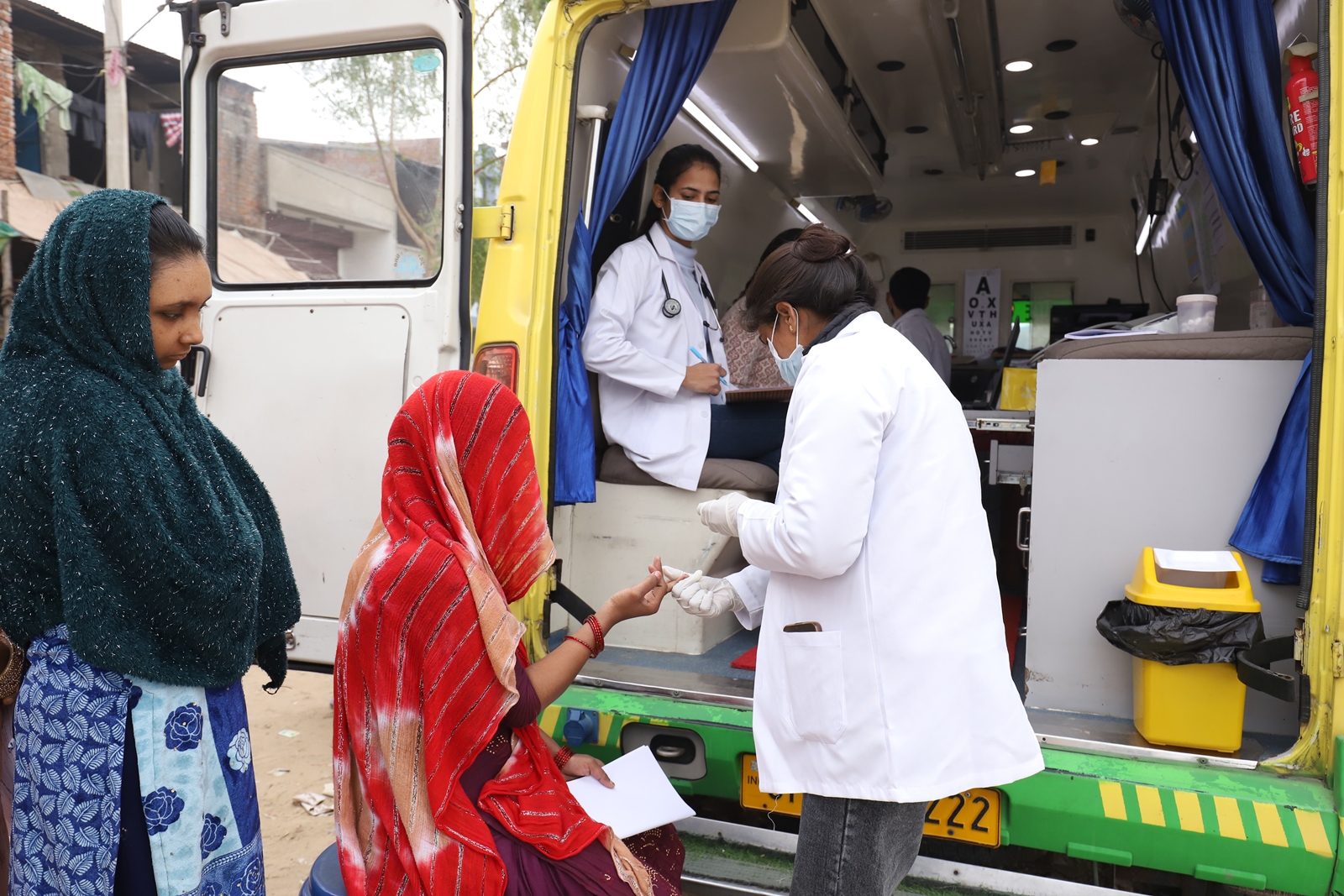Isn’t it utterly shocking to know that almost one in three women across the globe have been subjected to physical or/and sexual violence at least once in their lifetime? It roughly puts the estimation close to 736 million in the world, according to the UN Women. The data also shows that most violence against women is committed by their current or former spouses or intimate partners. Violence against women is one of the most frequent human rights violations across the world.
In India, police have registered 4.45 lakh ‘crime against women’ cases in 2022, according to the National Crime Records Bureau. It means about 1,220 cases are officially registered every single day. Nobody has counted how many go unaccounted in a country as diverse and geographically large as India. These women, who are subjected to violence, are prone to suffer from anxiety disorders, depression and sexually transmitted diseases, among others, for a really long time.
Before we delve deep into the topic, let’s understand what violence against women actually is. Because there are several misconceptions surrounding violence against women.
What is violence against women?
Violence against women refers to any act of violence that makes women suffer. It just does not mean only physical violence. It also includes sexual, psychological and emotional abuses.
The United Nations general assembly in 1993 issued the Declaration on the Elimination of Violence Against Women and it provides a definition for violence against them. In their own words, “The term violence against women means any act of gender-based violence that results in, or is likely to result in, physical, sexual or psychological harm or suffering to women, including threats of such acts, coercion or arbitrary deprivation of liberty, whether occurring in public or private life.”
Any form of physical abuse, including slaps, punches, shoves, kicks, arm twists, burning and stabbing, is punishable irrespective of its intensity. Sexual violence includes sexual assault, harassment, coercion, rape and marital rape. Psychological and emotional abuses include continual humiliation, threats against children, threats to induce injury or death, manipulation, gaslighting and controlling behaviours. Child marriage, female genital mutilation and trafficking for sexual exploitation and slavery are also forms of violence used against women.
When these abusive behaviours are used by family members, including her spouse, to gain or maintain power and control over another in an intimate relationship, it falls under domestic violence. In India, dowry-related violence continues to occur even today, despite the government terming dowry as illegal and banning it across the country. When the women’s family fails to meet the dowry demands, it often leads to violence, harassment and even the deaths of women.
Consequences of violence against women
Violence, according to the World Health Organization (WHO), has immediate and long-lasting effects on women’s health, and in certain cases, it is fatal. In addition to their physical health, it also affects the mental and behavioural health of the victims. Violence against women affects not only the victims but also families, communities and societies at large.
- Physical health issues: The physical health consequences of violence can be immediate and acute, long-lasting and chronic, and can even be fatal. Studies have constantly found out that the impact on women’s physical and mental health depends upon the severity of abuse. Victims may suffer from chronic pain, gynaecological problems, complications during pregnancy and childbirth, sexually transmitted diseases and other long-term health conditions.
- Mental health issues: Almost all the survivors of violence face the risk of adverse mental health issues. Some of the most prevalent issues include anxiety, depression, post-traumatic stress disorder, eating and sleeping disorders, suicidal thoughts and psychosomatic disorders.
- Behavioural health issues: Abuse in childhood has been associated with risky behaviours like early sexual activity, alcohol, tobacco, and drug abuse. Victims often feel worthlessness and have difficulty distinguishing sexual from affectionate behaviour, maintaining appropriate personal boundaries and refusing unwanted sexual advances. They withdraw from friends and family, leading to isolation and decreased social support, which can perpetuate the cycle of violence.
International Day for the Elimination of Violence Against Women 2024
Despite the numerous efforts taken to contain violence against women, the scourge has been intensifying, especially in the post-pandemic era. One of the solutions is to invest in prevention. According to the UN, only 5% of government aid is focused on tackling violence against women and girls, and less than 0.2% is invested in preventing the crimes. There is a dire requirement for investing in women’s organisations, better legislation and training of law enforcement officials, among others. More than that, creating awareness about it is the need of the hour.
To eliminate the incidents of violence against women by creating awareness, the United Nations has been commemorating International Day for the elimination of violence against women on November 25 annually. November 25 was commemorated as a day against gender-based violence by activists for women’s rights ever since 1981. It was to honour three Mirabal sisters, activists from the Dominican Republic who were murdered based on the order of the country’s ruler in 1960.
The UN’s General Assembly adopted the Declaration on the Elimination of Violence Against Women on December 20, 1993. It in turn has paved the path for eradicating violence against women across the world. On February 7, 2000, the assembly adopted the resolution. It has been inviting governments and other organisations to come together to raise awareness among the public.
As part of the observance, campaigns would be organised for 16 days. Emphasis would be given to achieve gender equality, empower all women and girls as mentioned in the sustainable development goals and call for unity to end violence against women.
Facts on violence against women
Ever since the sustainable development goals were adopted during the United Nations Sustainable Development Summit in 2015 with the target to achieve them by 2030, a lot of efforts have been taken. Though there have been notable gains in certain areas, the shift towards attaining gender equality has been significantly slow. The recent report by UN Women estimates about 286 years to achieve gender equality in the world.
About 162 countries have passed laws against domestic violence. Nearly 147 countries have laws against sexual harassment at the workplace. But what is heartbreaking is that over 600 million women continue to live in countries that have not taken any steps towards protecting them from domestic violence.
Irrespective of whether a country has laws to protect its women from violence or not, research points out that many have not properly implemented the laws. Even the ones that have implemented the laws are non-compliant with international standards. According to data, less than 40% of the victims of violence come forward to report their abuse, and only 6% of women report sexual abuse from their husbands. Studies, time and again, confirm that women are frequent victims of intimate violence.
UN Women, in 2018, published a report titled ‘Turning promises into action: gender equality in the 2030 agenda for sustainable development’. According to it, as many as 49 countries do not have laws to protect women from domestic violence; one in five girls and women aged under 50 years report physical or/and sexual violence by their partner within a year; more than 750 million girls were married before they turned 18 years; and over 200 million girls and women in 30 countries have undergone female genital mutilation.
Whatever the little progress the world has made in curbing the violence against women, the COVID-19 pandemic has effortlessly squashed it all and pushed the world behind by several years. According to a recent Oxfam report, lockdowns linked to the pandemic have rapidly increased the violence against women and girls. The report says that up to 33% raise in intimate partner violence has been reported in certain countries. It also estimates that 47 million women and girls had been pushed into extreme poverty since the declaration of the pandemic. Poverty has in turn paved the path for school dropouts, child marriages and human trafficking.
International Day for the Elimination of Violence Against Women 2024- In Date and Spirit
Though some progress has been made in curbing all kinds of violence against women, more significant steps need to be taken across the world to eliminate it completely like Smile Foundation does in through women empowerment programme. But only when people are aware of the violence and its impact on women will steps be taken and successfully implemented to curb it. That’s why commemorating the International Day for the Elimination of Violence Against Women 2024 has become more important now than ever.









